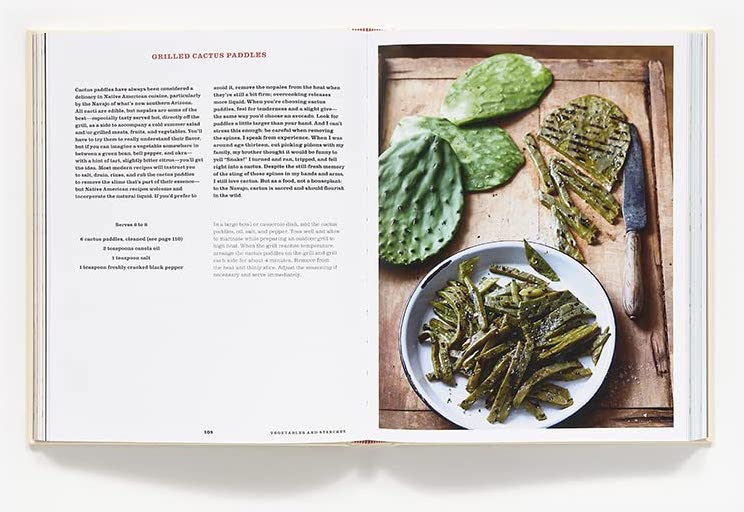Part of knowing a people is experiencing their cuisine. So what does the Blackfoot tribe’s food tell us about this unique group of natives?
It tells us about their nomadic lifestyle, which revolved around roaming bison herds, the vegetation that grew on their land, their tastes as a people, their appreciation for wildlife, and much more.
Here are five typical Blackfoot foods the tribe consumed regularly. Also, find answers to commonly asked questions about how the tribe hunted, where the name originates from, and more.
Dig in and find some inspiration for your next meal!
How did the Blackfoot tribe get their food?
To get food, the Blackfoot tribe hunted Bison and other wild game on horseback, using bows and arrows. The tribe also collected wild forage, such as cherries and camas root.
The Blackfoot relied on every part of the Bison for nearly every aspect of their daily lifestyle.
What kind of food did the Blackfoot tribe eat?
The Blackfoot tribe’s diet consisted primarily of bison meat, as well as other wild game and wild forage, such as turnips, camas root, and native herbs.
Most of the Blackfoot tribe food recipes used Bison meat as a base. They mixed bison meat with other ingredients, such as chokecherries, to make unique dishes like Pemmican.
Top 5 Blackfoot Foods
Here are five common and traditional Blackfoot foods with detailed instructions on how the tribe prepared them.
1. Bison Meat – Blackfoot food
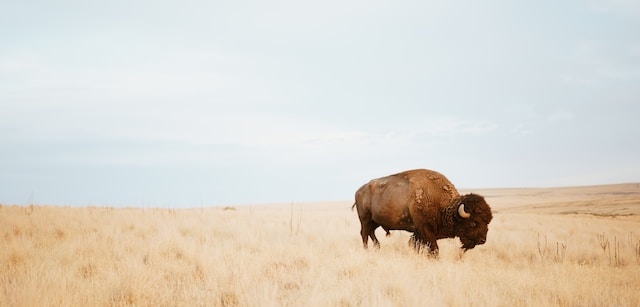
The Blackfoot Native American tribe that lived in present-day Montana primarily fed on bison. After a hunt, the nutritious bison meat would provide sustenance for the tribe for months and serve as a base for many Blackfoot foods.
The Blackfoot used three different methods to hunt:
- Firing arrows from horseback
- Stampeding the bison off a cliff and hunting the inured bison in the ravine below
- Luring them onto thin ice
Like many Plains Indians, because of their dependence on the bison, the Blackfoot never built permanent camps. Instead, they moved, following the bison herds.
(source: Lacey 24)
Preparing and cooking bison meat
After a hunt, the tribesmen would prepare the meat.
First, they would cut it into thin slices. Next, they would hang it up to be cured in the sun, out of the reach of dogs.
Lastly, when ready to cook, they would use one of the following methods:
- Boil it
- Roast it on a spit
- Or broil it on hot coals
The Blackfoot’s preferred method was boiling. Here’s how they would prepare the meat:
- First, they would dig a hole in the ground
- Next, they would lay skin flesh side up in the hole
- Then, they would place meat and water in the hole
- And lastly, they would add red-hot stones
Once boiled, the meat would be ready to eat.
(source: Blackfeet Tribe: How They Lived)
2. Pemmican – Blackfoot food
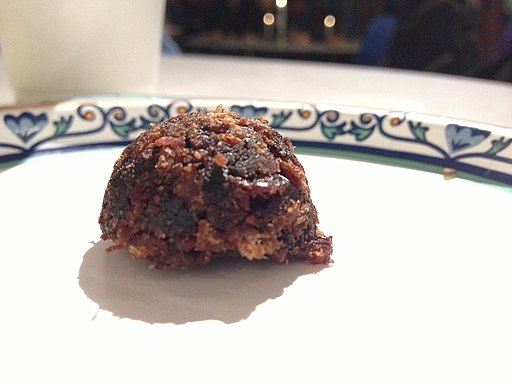
Pemmican is a common Blackfoot food that was extremely important due to its dense, hearty, and nutritious nature.
Ingredients
- Choice Cut Bison Meat
- Crushed wild cherries (optional)
How to make the berry form of Pemmican
- Crush the berries into a paste
- Boil bison bones
- Take the best cuts of bison meat
- Dry the meat
- Collect marrow from boiling bison bones (this helps prevent burning the meat)
- Mince the bison meat
- Mix the meat with the berry spread
- Add peppermint for flavor (optional)
- Hold over fire
Once cooked, they would place the meat in a bag for storage. One pound of pemmican = five pounds of meat, which was edible for the hunter for many months.
(source: Wissler 22-3)
3. Depuyer – Blackfoot food
Depuyer is the fatty substance taken from the backbone of the bison. The Blackfoot tribe used depuyer as a substitute for bread and ate it with lean or dried meat.
Ingredients
- Fatty substance from the bison’s backbone
How to prepare Depuyer
- Collect the Depuyer
- Dip it into hot grease for 30 seconds
- Hang it in a smokehouse for up to 12 hours
Once smoked, it became very tender, sweet, and nourishing.
Depuyer’s main quality wasn’t its unique taste, but that after being cooked it would last almost indefinitely and satisfy hunters’ appetites while on hunting campaigns.
(source: Wissler 24)
4. Camas root – Blackfoot food
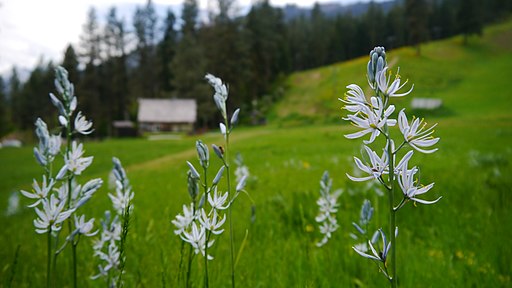
The Camas root is a wild edible plant of Montana that grows abundantly in specific locations. It is common along the eastern slopes of the Rocky Mountains, though it mostly blooms from June 15 to July 15.
Once found, the Blackfoot would dig it up, cook it, dry it, and use it as additional sustenance outside of the buffalo hunting season.
Camas Root was a delicacy of Blackfoot food and an important part of their diet that wasn’t meat.
How to prepare Camas root – Blackfoot food
- Dig a large pit
- Place stones in the bottom
- Light a fire on top of the stones
- Stoke the fire for several hours until the stones are heated
- Remove the ashes
- Line the entire pit with grass
- Fill the pit almost to the top with camas bulbs
- Place a layer of grass, then dirt, then twigs over the bulbs, for a four-inch total layer
- Light a fire on top of the dirt
- Stoke the fire for one to three days
Once ready, the sweet syrup that had gathered on the twigs was given to the children, and the roots were spread out in the sun to dry, later to be stored in sacks. The taste of cooked camas root was something like a roasted chestnut, with a hint of sweet potato.
Sometimes the tribe would grind the dried bulbs into meal, mix it with water to create a batter, and cook it like a pancake. Or, they would mix the meal with water and form large bricks, which they would cook and store for later use.
(source: Blackfeet Tribe: How They Lived)
5. Waterfowl eggs – Blackfoot food
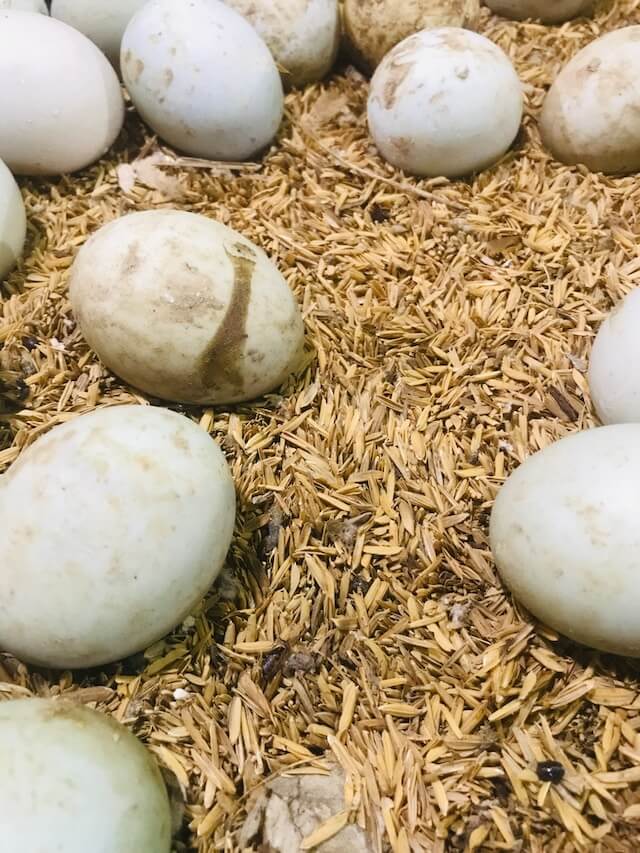
In the spring, the Blackfoot Native American tribe would collect eggs from ducks and other waterfowl to cook and eat.
How to prepare Waterfowl eggs
- Dig a large hole in the ground
- Fill it partiallywith water
- Create platforms of sticks above the water
- Rest the eggs on the platforms
- Meanwhile, start a fire to heat stones
- Dig a smaller hole next to the large hole slanting into the larger hole at the bottom
- Place cross-sticks across the opening of the large hole
- Cover the large hole by placing mud across the sticks
- Drop the amber-hot stones into the slant
The red hot stones would roll into the water, heat it, and cook the eggs by steam.
(source: Blackfeet Tribe: How They Lived)
Blackfoot foods reflected the tribe’s nomadic lifestyle – it was nutritious, it was filling, it would keep for a long time, and the ingredients were readily available everywhere they lived.
An ideal diet for people constantly on the move.
FAQs – Blackfoot food
Below you can find answers to commonly asked questions about Blackfoot food.
What kind of berries did the Blackfoot tribe eat?
One of the most common berries the Blackfoot tribe ate were chokecherries. The tribe often mixed dried chokecherries and minced bison meat to create a dish called Pemmican.
Did the Blackfoot tribe eat fish?
The Blackfoot tribe avoided eating fish as the tribe believed underwater people and spirits lived in rivers and lakes. Reptiles and bears were also unfit for consumption.
Learn more about Montana’s Native American cultures
Sources:
1. “Blackfeet Tribe”: How They Lived,” Last modified 2011, http://www.accessgenealogy.com/native/tribes/blackfeet/howtheylived.htm
2. “Heart Disease and Stroke Prevention,” Last modified July 21, 2010, http://www.cdc.gov/chronicdisease/resources/publications/AAG/dhdsp.htm
3. Flaminiano Garces, Christina. Lisa A. Sutherland, “Native American Diet,” Last modified 2011, http://www.diet.com/g/native-american-diet
4. “The Blackfeet Today,” Last modified 2011, http://www.blackfeetnation.com/about-the-blackfeet/the-blackfeet-today.html
5. Jensen Lacey, Theresa. The Blackfeet, New York: Chelsea House Publishers, 1995.
6. Wissler, Clark. A Blackfoot Source Book, Edited by David Hurst Thomas. New York: Garland Publishing, 1986.




